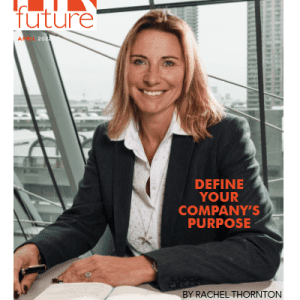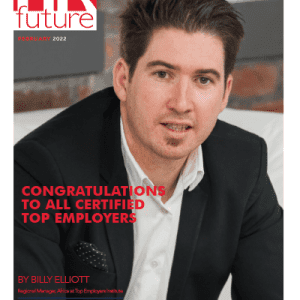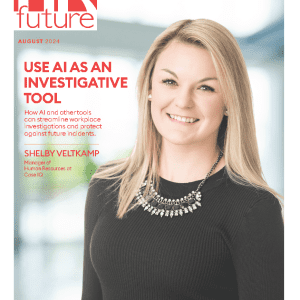Managing human resources in senior living facilities requires unique strategies. The focus must ensure high-quality care while maintaining staff well-being and regulatory compliance. Effective HR practices support a harmonious environment where employees thrive, and residents receive the best possible care.
Recruitment and Retention Strategies
Attracting the Right Talent
Finding skilled caregivers and support staff remains critical for senior living facilities. Job postings should emphasize the rewarding aspects of working with seniors, showcasing the facility’s culture and values.
Highlighting opportunities for professional growth and the positive impact on residents’ lives can attract compassionate and dedicated individuals. Leveraging online platforms, job fairs, and partnerships with local training institutions enhances recruitment efforts, ensuring a steady influx of qualified candidates who align with the facility’s mission and values.
Employee Retention
Retaining skilled staff reduces turnover and enhances continuity of care. Offering competitive salaries, benefits, and opportunities for professional growth keeps employees motivated.
Implementing recognition programs and providing regular feedback on performance foster a sense of achievement and belonging among staff members. By addressing employees’ needs and creating a supportive work environment, facilities can build a loyal workforce committed to delivering high-quality care.
Training and Development
Initial Training
New hires must undergo comprehensive orientation programs. These sessions cover the facility’s policies, procedures, and care standards, ensuring a thorough understanding of operational expectations.
Training should focus on interpersonal skills, emergency response, and specific care techniques for residents with varying needs. Equipping new employees with the necessary knowledge and skills from the outset fosters confidence and competence in their roles.
Continuous Education
Ongoing training keeps staff updated on the latest in senior care. Workshops, seminars, and online courses provide continuous learning opportunities, enabling employees to stay current with industry best practices.
Encouraging certification in specialized areas, such as dementia care, can enhance the quality of services offered and foster professional growth. Continuous education improves care standards and demonstrates the facility’s commitment to employee development.
Compliance and Regulatory Management
Understanding Regulations
Senior living facilities must adhere to numerous regulations. HR managers should stay informed about local, state, and federal requirements to ensure compliance. Regular audits and compliance checks help identify and address any gaps, maintaining the facility’s standing and avoiding legal issues.
Keeping up with regulatory changes and implementing necessary adjustments is crucial for sustaining a compliant and safe care environment.
Managing Documentation
Accurate record-keeping supports compliance and operational efficiency. This includes maintaining employee files, training records, and incident reports, which are essential for tracking and accountability.
Digital solutions streamline documentation processes, making information easily accessible and manageable for HR personnel. Effective documentation practices ensure regulatory compliance and enhance overall organizational efficiency.
Employee Wellness and Support
Promoting Work-Life Balance
Supporting staff work-life balance improves job satisfaction and reduces burnout. Offering flexible schedules, paid time off, and wellness programs encourage employees to maintain a healthy lifestyle.
Providing access to mental health resources and counseling services also helps staff cope with the emotional demands of their roles. By promoting work-life balance, facilities can foster a healthier, more productive workforce dedicated to delivering quality care.
Creating a Supportive Work Environment
A positive work culture fosters teamwork and mutual respect. Open communication channels, regular team meetings, and conflict resolution mechanisms contribute to a supportive atmosphere where staff feel valued and heard.
Encouraging feedback and involving employees in decision-making processes can enhance their sense of belonging and commitment to the facility. A supportive work environment boosts morale and improves overall job performance.
Technology Integration in HR Practices
HR Management Systems
Implementing advanced HR management systems simplifies administrative tasks. These platforms assist with payroll, scheduling, and performance evaluations, ensuring accuracy and efficiency.
By automating routine processes, HR managers can focus more on strategic initiatives and employee engagement, rather than being bogged down by paperwork. Modern HR systems also facilitate better data management and decision-making, enhancing the overall HR function.
Leveraging Data Analytics
Data analytics provide insights into workforce trends and performance metrics. Analyzing turnover rates, training effectiveness, and employee satisfaction surveys informs better HR strategies, allowing for proactive adjustments.
This data-driven approach enables HR managers to identify areas for improvement and implement targeted interventions. Leveraging data analytics supports continuous improvement and helps create a more efficient and responsive HR department.
Addressing Workforce Challenges
Managing Staff Shortages
Staff shortages challenge senior living facilities, affecting care quality and employee morale. Proactive recruitment strategies, cross-training staff, and temporary staffing solutions can mitigate these issues, ensuring adequate coverage.
Offering incentives for overtime and referrals also helps attract additional support during peak times. Effective management of staff shortages ensures that residents receive uninterrupted care and that staff workload remains manageable.
Enhancing Employee Engagement
Engaged employees show greater commitment and deliver better care. Regularly soliciting feedback, recognizing contributions, and fostering a sense of community keeps staff engaged and motivated.
Team-building activities and professional development opportunities further enhance engagement levels, promoting a collaborative and dynamic work environment. By prioritizing employee engagement, facilities can improve job satisfaction and reduce turnover.
Best Practices for HR in Senior Living Facilities
Implementing Comprehensive Onboarding
A structured onboarding process sets the foundation for new hires. It includes orientation sessions, mentoring programs, and gradual integration into the team, providing a clear path for new employees.
Clear job expectations and support help new employees acclimate quickly and confidently, reducing initial stress. Comprehensive onboarding ensures that new hires feel prepared and welcomed, setting the stage for long-term success.
Fostering Career Development
Supporting career advancement within the facility promotes loyalty and motivation. Offering pathways for promotion, funding for further education, and mentorship programs encourages employees to pursue long-term careers in senior care.
Clear career progression opportunities demonstrate the facility’s investment in its employees’ futures. Fostering career development helps retain talented staff and ensures continuous improvement in care quality.
Maintaining Open Communication
Transparency and open communication build trust between management and staff. Regular updates, town hall meetings, and anonymous suggestion boxes create a culture of openness where employees feel valued.
Addressing concerns promptly and transparently strengthens employee relationships and fosters a positive work environment. Maintaining open communication ensures that staff feel heard and appreciated, contributing to higher job satisfaction and productivity.
The Role of Top Senior Caregivers
Selecting Skilled Caregivers
Selecting top senior caregivers involves thorough vetting and background checks. References, certifications, and previous experience in senior care ensure that caregivers meet the facility’s high standards.
Behavioral interviews assess candidates’ interpersonal skills and empathy, crucial traits for providing quality care. Selecting skilled caregivers ensures that residents receive compassionate and competent care, enhancing their overall well-being.
Recognizing and Rewarding Excellence
Recognizing top senior caregivers for their dedication and exceptional service encourages high performance. Implementing recognition programs, performance bonuses, and career development opportunities shows appreciation and motivates other staff members.
Celebrating excellence in care boosts morale and sets a standard for others to aspire to. Recognition and rewards foster a culture of excellence and continuous improvement within the facility.
Providing Support and Resources
Supporting top senior caregivers with adequate resources and tools enables them to deliver high-quality care. Access to training, mentoring, and a collaborative work environment empowers caregivers to excel in their roles.
Providing the necessary support ensures that caregivers feel valued and capable of performing their duties effectively. A well-supported caregiving team translates to better resident care and a more harmonious work environment.
Conclusion
Effective HR practices in senior living facilities directly impact the quality of care provided to residents. By focusing on recruitment, retention, training, compliance, and employee wellness, HR managers create a supportive and efficient work environment.
Adapting to technological advancements and future workforce trends ensures that senior living facilities continue to offer exceptional care and remain attractive workplaces for dedicated caregivers.
Guest writer.















